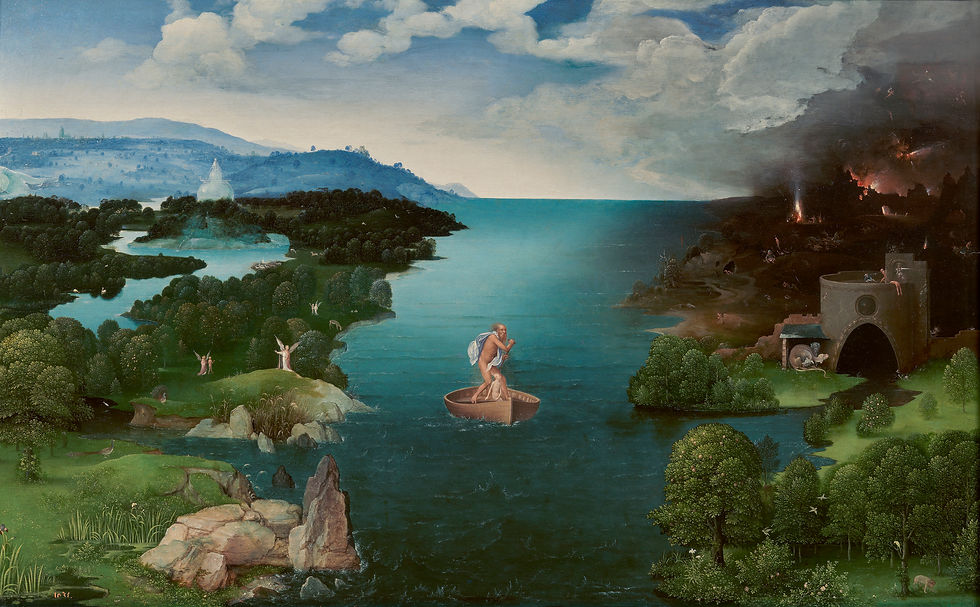Landscape Artists You Should Know About... Part I
- Ahmed Kheder

- Nov 16, 2023
- 3 min read
Updated: Nov 18, 2023
Throughout history, landscape artists were inspired by the aesthetic appeal of the physical elements of geophysical defined landforms.
Landscape artists represented (ice-capped) mountains, hills, water bodies such as rivers, lakes, ponds and the sea, living elements including indigenous vegetation, human elements of land use, buildings, and structures reacting with lighting and weather conditions.
Landscape artists reflected the cultural overlay of human presence and a living synthesis of people and place that is inspired by local and national identity.
Though, Landscape paintings may be entirely imaginary or copied from reality with varying degrees of accuracy, the character involved by the artist in a landscape painting helps define the self-image of the people who inhabit the landscape and a sense of place that differentiates one region from other regions. A landscape painting simply is the dynamic backdrop to people's lives.
The Term "Landscape Painting"
The term landscape emerged around the turn of the sixteenth century to denote a painting whose primary subject matter was natural scenery.
Landscape Painting as a term with its connotations of scenery, appeared in the late sixteenth century when the term landschap was introduced by Dutch painters who used it to refer to paintings of inland natural or rural scenery. The word landscape, first recorded in 1598, was borrowed from a Dutch painters' term.
There are several definitions of what constitutes a landscape painting, in common usage however, a landscape painting refers to the pictorial representation inspired by the features of an area of land in terms of aesthetic appeal.
The term "Landscape painting" refers to the depiction of natural scenery such as mountains, valleys, trees, rivers, and forests, especially where the main subject is a wide view with its elements arranged into a coherent composition.
In figurative paintings, landscape backgrounds for figures can still form an important part of the work, sky is almost always included in the view, and weather is often an element of the composition.

The World Landscape Paintings of Joachim Patinir
The Flemish Renaissance painter Joachim Patinir (c. 1480 – 5 October 1524) was a pioneer of landscape paintings as an independent genre, and he was the first Flemish painter to regard himself primarily as a landscape painter.
Though, there are only five paintings signed by Patinir, but many other works have been attributed to him or his workshop with varying degrees of probability. Joachim Patinir, originally from Dinant or Bouvignes in present-day Wallonia, Belgium, effectively invented the world landscape painting composition, a distinct style of panoramic northern Renaissance landscapes.

The world landscape and Patinir's work, in general, marks an important stage in the development of the representation of perspective in landscape painting.
Patinir was registered as a member of Antwerp's Guild of Saint Luke in 1515. He lived and worked in Antwerp for the rest of his life.
Patinir may have initially studied in Bruges with Gerard David. In 1511, Patinir is believed to have travelled to Genoa with David and Adrien Ysenbrandt.
By 1520 Patinir was well known for his World Landscape paintings, and when Dürer visited him in Antwerp he described him in his diary as "the good painter of landscapes" (gut landschaftsmaler) in the first use of Landschaft in an artistic context.

Patinir's innovative Landscape Paintings were developed by Herri met de Bles (1510 – c.1555–1560), who was probably his nephew. He took the type into the new style of Northern Mannerism. Other artists were Lucas Gassel, the Brunswick Monogrammist, and Cornelis Massys.
Patinir died in Antwerp in 1524. Quentin Metsys became the guardian of his daughters.
What Were Patinir's World Landscapes About?
Patinir's World landscapes use a high viewpoint with a high horizon, but his grasp of aerial perspective is far from complete. He uses a consistent and effective colour scheme in his landscapes, which was influential on later landscape painting.
Patinir's World landscapes foreground is dominated by brownish shades, while the middle ground is painted in a bluish green and the background a pale blue, creating an effective sense of recession into the distance.
The world landscape composition shows an imaginary panoramic landscape seen from an elevated viewpoint that includes mountains and lowlands, water, and buildings.
Although compositions of this broad type continued to be common until the 18th century and beyond, the term World Landscape is usually only used to describe works from the Low Countries and Germany produced in the 16th century.
The World Landscape paintings were imaginary compilations of spectacular aspects of geography with a sense of impending doom is created by the threatening clouds, the capricious and sharply pointed contours of the rocks and the crowding together of natural elements, giving an idealized composite of the world taken in at a single Olympian glance.



Comments